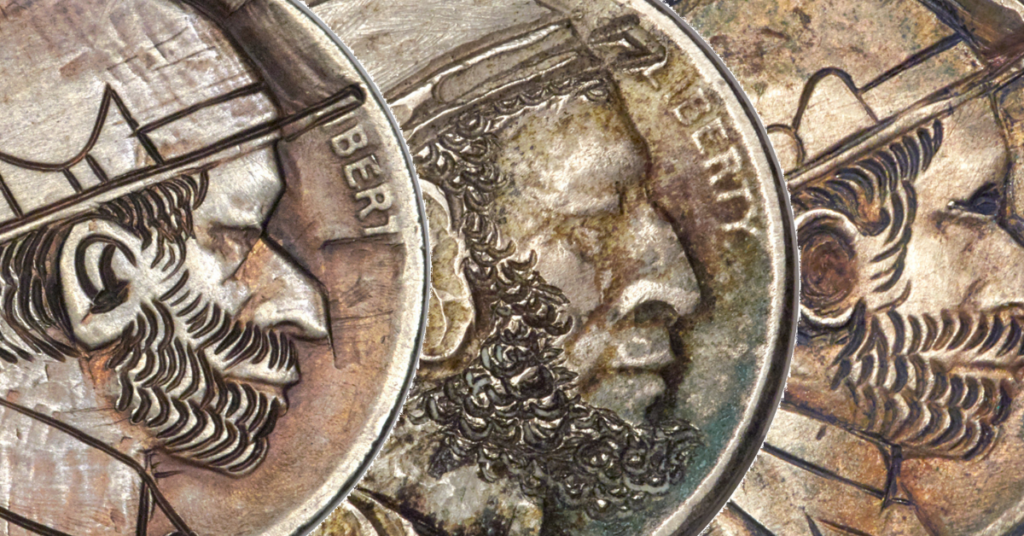The US Coins Auction at the Florida United Numismatists (FUN) Show, which will be held Jan. 9-14 in Orlando, Fla., will feature the Don “H2O” Haley Hobo Nickel Collection, a group of 208 lots with similar crossover appeal. Hobo nickels are sculptural art, in which designs ranging from hobos to soldiers to Native Americans to assorted animals and even clowns are carved into U.S. nickels.
The nickel has been popular among artists because the diameter, thickness and relatively soft metal, make it an ideal medium for carving, scraping and other manipulation of the surface. The first hobo nickels are referred to as “classic,” while “modern” hobo nickels are generally carved on coins starting in the 1930s.
Artists have developed followings because of their signature styles, from the intricate carvings of facial hair to a signature element so unique and identifiable that the artist is immediately known. This is the case with nickels carved by the artist known as “Peanut Ear,” who used several distinctive characteristics in his carvings, but the most notable was an enlarged peanut-shaped ear.
The signature by Bertram Wiegand, the artist known as “Bert,” is another distinguishing style. He simply scratched off the “LI” at the beginning and the “Y” at the end of “LIBERTY” to leave “BERT” – a personal touch built in to the text in the coin’s original Mint-issued design.
Classic Domed Hat Hobo by ‘Bert’
Superior Quality, Early Romines Certificate
Original Hobo Nickel by ‘Bert’
Hobo nickels were carved first in the early 1900s, although there were other altered coins dating as far back as the mid-1700s. It appears that more classic hobo nickels were made dated 1913 than from any other year before the 1930s. Designs evolved over the years, with features like a derby hat or full beard becoming standard for some artists.
Most classic old hobo nickels are not yet owned by collectors, increasing the appeal of the Haley collection. Haley was introduced to hobo nickels by a friend in 1988, and became so enamored he received the ninth membership in the Original Hobo Nickel Society (OHNS) when it was formed in 1992. With his hobo moniker “H2O” chosen because of his career working in the water treatment industry, Haley spent years compiling the offered collection, which is one of the finest ever assembled.
Collectors are urged to scrutinize each lot, many of which include multiple extraordinary nickels from a wide array of talented artists.
Visit our U.S. Coins department to find upcoming auctions or to search our auction archives for past sale prices.
